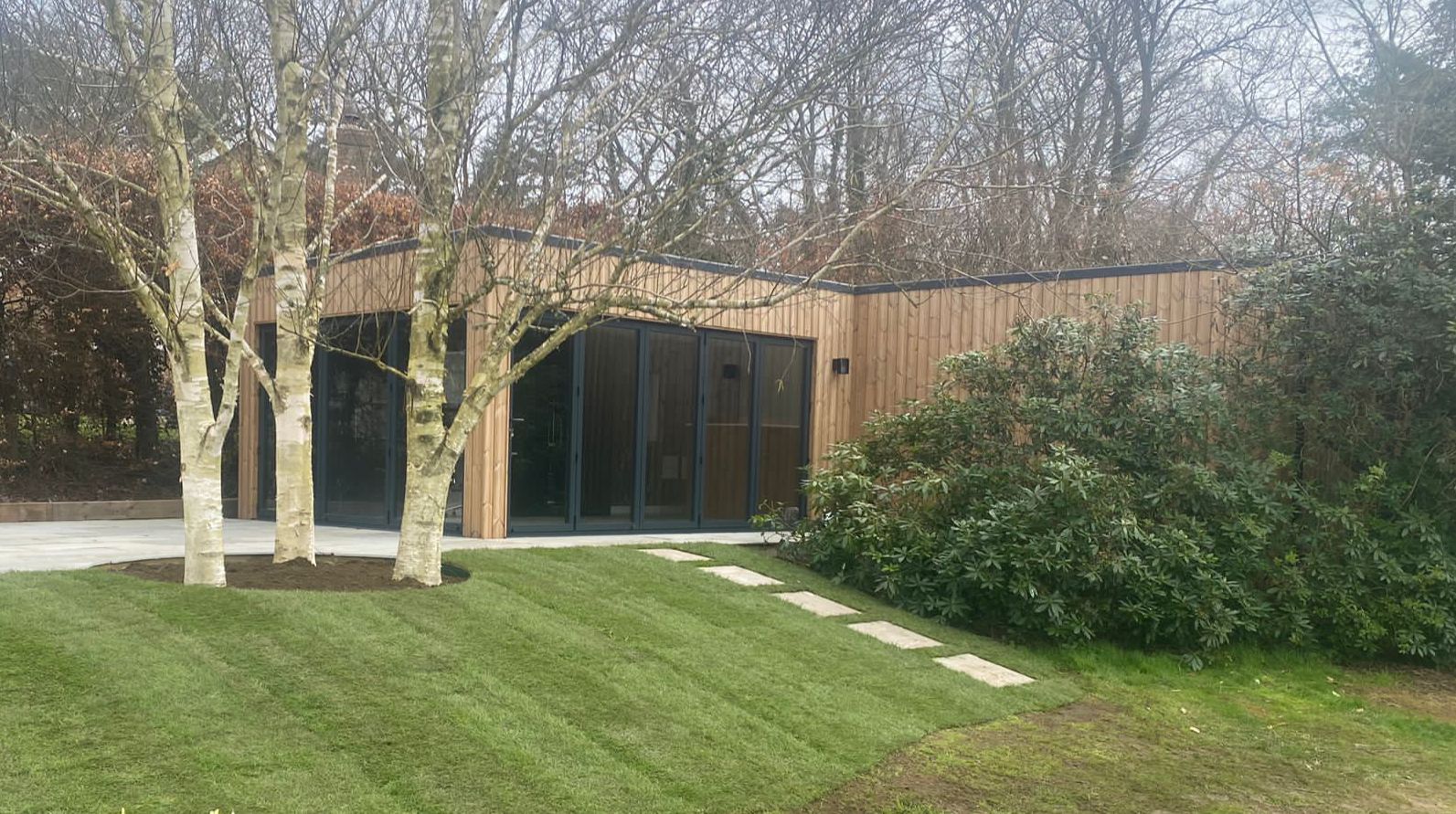Imagine stepping out into your backyard, surrounded by the soothing sounds of nature. Now imagine being able to create and record music in that tranquil setting. With a garden recording studio, you can make your musical dreams a reality while enjoying the beauty of the great outdoors. In this blog post, we’ll show you how to build your own garden recording studio from start to finish. So grab your tools and let’s get started on creating the ultimate creative sanctuary in your own backyard!
Introduction: Importance of Having a Home Recording Studio
In today’s digital age, the music industry is constantly evolving and becoming more accessible to aspiring musicians. With advancements in technology, creating high-quality music has become easier and more affordable than ever before. One essential aspect of this evolution is the rise of home recording studios.
Having your own home recording studio offers numerous benefits for musicians, whether you are just starting or have been in the industry for years. In this section, we will discuss the importance of having a home recording studio and how it can enhance your creativity and career as a musician.
1. Cost-effective Solution
Building a professional-grade recording studio used to involve substantial financial investments in equipment, space rental, and sound engineering services. However, with modern technology, you can set up your own home recording studio at a fraction of the cost. All you need are some basic equipment such as a computer/laptop, audio interface, microphone, headphones/speakers and Digital Audio Workstation (DAW) software – which are all relatively affordable nowadays.
2. Unlimited Creative Control
Creating music in your own home recording studio allows for complete creative control over every aspect of the production process. You no longer have to rely on external studios or engineers to achieve the desired sound quality or make changes to your recordings. This gives artists more freedom to experiment with different sounds and styles without any time constraints or additional costs.
3. Convenience & Flexibility
Having a home recording studio means that you have 24/7 access to your workspace whenever inspiration strikes! No more having to book expensive studio sessions around other people’s schedules – now you can create music on your terms at any time. Additionally, with remote collaboration becoming increasingly popular in the music industry, having a well-equipped home studio makes it easier for artists to collaborate with others from anywhere in the world.
4. Professional Quality Recordings
Many people may assume that home recordings cannot match the quality of professional studios. However, with the right equipment and knowledge, you can achieve professional-sounding recordings in your own home studio. This not only saves money but also allows you to maintain creative control over the final product.
Location and Design: Choosing the right spot in your garden and creating a blueprint
When it comes to building a garden recording studio, one of the most important aspects to consider is the location and design of your space. Choosing the right spot in your garden and creating a blueprint for your studio will not only affect the overall functionality and aesthetics of your space, but also impact the quality of sound that can be achieved.
The first step in selecting a location for your garden recording studio is to assess the available space in your garden. Take note of any trees, plants or structures that may provide natural sound barriers or reflections. You should also consider factors such as access to electricity and water supply, as well as potential sources of noise pollution from nearby roads or neighbors.
Once you have determined an ideal area for your studio, it’s important to create a detailed blueprint before beginning construction. This will ensure that all necessary elements are incorporated into the design and prevent any costly mistakes during construction. Some key considerations when designing your garden recording studio include:
1. Size: The size of your studio will largely depend on how much space you have available in your garden and what equipment you plan on using. A standard size for a home recording studio is around 10 feet by 12 feet, but this can vary depending on individual needs.
2. Orientation: The orientation of your studio within your garden is crucial for achieving optimal acoustics. Generally, it’s best to position the longest wall parallel with the length of the garden rather than facing directly into it.
3. Soundproofing: To ensure high-quality recordings, proper soundproofing is essential. This can be achieved through techniques such as double walls with an air gap in between, floating floors, and acoustic insulation materials.
4. Lighting and ventilation: Good lighting and ventilation are important not only for comfort but also for maintaining a healthy environment for both equipment and musicians alike.
5 .Accessibility: Consider how easily accessible your studio will be from both inside and outside areas of your garden. This will be especially important when transporting equipment in and out of the studio.
By carefully considering these factors and creating a well-thought-out design, you can ensure that your garden recording studio is not only functional but also an enjoyable and inspiring space to create music. Remember to regularly check local building codes and regulations before beginning construction, and always consult with a professional if needed. With the right location and design, you’ll be on your way to building the perfect garden recording studio for all your musical needs.
Soundproofing: Tips and techniques for soundproofing your studio
Soundproofing is an essential aspect of building a recording studio in your garden. Without proper soundproofing, external noises can easily disrupt and interfere with the recording process, resulting in poor sound quality. In this section, we will discuss some tips and techniques for effectively soundproofing your garden recording studio.
1. Choose the Right Location:
The location of your garden studio plays a significant role in reducing external noise interference. It is best to select a spot that is away from busy roads or high-traffic areas. If possible, try to position your studio away from neighbors’ houses as well to minimize any potential noise complaints.
2. Build Thick Walls:
Thick walls are crucial for soundproofing your studio as they can effectively block out external noises. When constructing your garden studio, use dense materials such as concrete, brick, or stone instead of drywall. These materials have better sound insulation properties and can significantly reduce noise transmission.
3. Install Double Glazed Windows:
Windows are another common source of external noise infiltration in recording studios. Installing double glazed windows can provide an additional layer of insulation against outside sounds. They work by trapping air between two layers of glass, which helps reduce noise transmission.
4.Install Acoustic Panels:
Acoustic panels are designed specifically for absorbing and diffusing sounds within a room. By strategically placing them on the walls and ceiling of your garden studio, you can significantly improve its acoustics and reduce echoes and reverberations.
5.Add Mass Loaded Vinyl (MLV):
Mass loaded vinyl is a heavy-duty material that works exceptionally well at blocking out unwanted outside noises. It comes in rolls that you can easily install under carpets or behind walls to provide an extra layer of sound insulation.
6.Seal Any Gaps:
Even small gaps around doors and windows can let external noises seep into your recording space. Make sure to seal any openings using acoustic caulk or weatherstripping to prevent noise leaks.
7.Use Soundproof Curtains:
In addition to double glazed windows, you can also hang soundproof curtains over them to further reduce noise transmission. These curtains are made with heavy and dense materials that absorb sound waves and prevent them from entering your studio.
Soundproofing your garden recording studio is crucial for achieving high-quality recordings. By following these tips and techniques, you can effectively minimize external noises and create a quiet and controlled acoustic environment for your music production or podcasting needs.
Equipment and Set-Up: Essential equipment needed for a basic recording studio set-up
Building a garden recording studio requires careful planning and consideration of the necessary equipment for a basic set-up. The right equipment can make all the difference in creating high-quality recordings and ensuring a smooth workflow.
1. Computer/Laptop:
A computer or laptop is an essential piece of equipment for any recording studio. It serves as the control center for recording, editing, and mixing audio files. When choosing a computer, make sure it has enough processing power and memory to handle the demands of recording software.
2. Digital Audio Workstation (DAW):
A DAW is a software program used for recording, editing, and mixing audio files. There are many options available in the market such as Pro Tools, Logic Pro X, Ableton Live, etc. Choose one that suits your needs and budget.
3. Audio Interface:
An audio interface is used to connect your instruments or microphones to your computer and convert analog signals into digital signals that can be processed by your DAW. It also provides better sound quality compared to using the built-in sound card on your computer.
4. Microphones:
Having good quality microphones is crucial for capturing clear and crisp sound recordings in a garden studio setting. Depending on your needs, you may need different types of microphones such as dynamic mics for vocals or condenser mics for acoustic instruments.
5. Headphones/Speakers:
Headphones or speakers are necessary for monitoring while recording and mixing audio files accurately. For headphones, choose closed-back ones that provide isolation from external noise while speakers should be positioned correctly to provide an accurate representation of the sound.
6.Sufficient Cables:
To connect all your equipment together seamlessly, you will need various cables such as XLR cables for microphones, instrument cables for guitars/basses/keyboards, etc.
7.Soundproofing Materials:
Creating a quiet environment inside the garden studio is crucial so that external noises do not interfere with recordings. Soundproofing materials such as acoustic foam panels, bass traps, and sound blankets can help reduce unwanted noise.
8. Furniture:
To make your recording space comfortable and conducive to work in, you will need a desk or workstation to place your computer and other equipment. Additionally, investing in a comfortable chair is essential for long recording sessions.
9.Storage Solutions:
As your collection of audio files grows, having sufficient storage space is crucial. External hard drives or cloud storage options are ideal for backing up and storing audio files safely.
The above-mentioned equipment is essential for building a basic recording studio in your garden. However, depending on your specific needs and budget, you may choose to add more equipment such as MIDI controllers, preamps, and effects processors to enhance the quality of your recordings. Remember to do thorough research before making any purchases to ensure that you have all the necessary equipment for a successful garden recording studio set-up.
Designing the Interior: Tips for furnishing and decorating your garden recording studio
Designing the interior of your garden recording studio is an exciting and important step in creating a functional and inspiring space. It requires careful planning and attention to detail to ensure that your studio not only looks great, but also meets all your technical and practical needs.
Here are some tips for furnishing and decorating your garden recording studio:
1. Consider the Acoustics: The most crucial aspect of any recording studio is its acoustics. When designing the interior of your garden studio, it’s essential to consider the sound quality and how it will be affected by the materials you use for furnishings and decorations. Opt for furniture with soft fabrics or acoustic panels on the walls to absorb unwanted noise reflections.
2. Choose Comfortable Seating: As a musician or producer, you’ll likely spend long hours in your garden recording studio. Therefore, it’s crucial to have comfortable seating options such as ergonomic chairs or couches where you can relax and work without straining your back or neck.
3. Utilize Natural Light: Take advantage of natural light by incorporating large windows into the design of your garden recording studio. Not only does natural light create a pleasant working environment, but it also helps save energy costs by reducing the need for artificial lighting during daytime sessions.
4. Optimize Storage Space: A cluttered workspace can be distracting and affect productivity negatively. To avoid this, make sure to include ample storage solutions in your garden recording studio design, such as shelves, cabinets, and drawers to keep equipment organized neatly.
5. Personalize with Décor: Adding personal touches through décor is an excellent way to infuse character into your garden recording studio while creating a comfortable atmosphere for creativity. Hang up posters or artwork related to music, add plants for a touch of nature, or display instruments as decorative pieces.
6. Pay Attention to Lighting: Proper lighting is crucial in any workspace but especially important in a creative setting like a recording studio. Make sure to have a combination of ambient and task lighting, such as overhead lights and adjustable desk lamps, to create the right mood for different recording or mixing sessions.
7. Invest in Quality Equipment: The equipment you use will significantly impact the sound quality of your recordings. When furnishing your garden recording studio, choose high-quality speakers, microphones, and other essential tools that will help you achieve professional results.
Designing the interior of your garden recording studio requires a balance of functionality and aesthetics. By considering acoustics, comfort, storage space, personalization, lighting, and equipment quality, you can create a beautiful and practical space that inspires creativity while producing top-notch recordings.
Finishing Touches: Adding personal touches to enhance creativity and comfort
Once the main structure of your garden recording studio is built, it’s time to move on to the finishing touches. This is where you can really let your creativity shine and add personal touches that will make your studio unique and comfortable.
One of the first things to consider when adding finishing touches is the interior design. The overall aesthetic of your space can greatly impact the mood and inspiration in your studio. You may want to choose a color scheme that reflects your personal style or aligns with the purpose of your recordings. For example, if you plan on using your studio for relaxation and meditation music, choosing calming colors like blue and green can enhance this atmosphere. On the other hand, if you’re creating upbeat and energetic music, bold colors like red and orange may be more fitting.
Adding decor elements such as posters, paintings, or tapestries can also add character to your space. These items not only reflect your personality but can also serve as sound-absorbing materials to improve acoustics in the room. Incorporating plants into your studio can also bring a touch of nature indoors while providing some natural soundproofing.
In addition to aesthetics, comfort should also be a top priority when designing a recording studio. Investing in quality furniture such as a comfortable chair or couch will make extended recording sessions much more enjoyable. It’s also important to have good lighting in your space – both natural light during daytime hours and artificial light for night-time use.
Another way to enhance creativity in your garden recording studio is by incorporating functional storage solutions. This could include shelves or cabinets for organizing equipment and supplies, as well as wall-mounted instrument holders for easy access during recording sessions.
Don’t forget about technology! Adding smart home devices such as voice-controlled speakers or smart lighting systems can not only improve functionality but also create a futuristic vibe within your studio.
Adding personal touches through interior design choices, décor elements, comfortable furniture, functional storage, and technology can greatly enhance the creativity and comfort of your garden recording studio. Don’t be afraid to experiment and make your space truly unique to reflect your personal style and needs.
Maintenance and Upkeep: How
Maintenance and upkeep are crucial factors to consider when building a garden recording studio. Without proper maintenance, the studio may not function at its full potential or may even experience technical issues that could hinder the recording process. In this section, we will discuss some important steps on how to maintain and upkeep your garden recording studio.
1. Keep it clean: Regular cleaning is essential for any recording studio, including a garden one. Dust and debris can damage equipment and affect sound quality. Make sure to dust all surfaces, including equipment and furniture, at least once a week. Vacuuming or mopping the floor should also be done regularly.
2. Protect from pests: As your garden studio is located outside, it is more prone to pest infestations like insects or rodents. These pests can cause damage to equipment and cables, affecting the overall functioning of your studio. To prevent this, make sure to seal any openings in the walls or floors that could serve as entry points for pests.
3. Monitor humidity levels: Humidity can have a significant impact on recordings and equipment in your garden studio. High humidity levels can cause condensation on sensitive electronic components, leading to malfunctions or even permanent damage. Invest in a dehumidifier if necessary to keep humidity levels under control.
4. Check cables regularly: Cables are an integral part of any recording setup but are also susceptible to wear and tear over time. Regularly check for frayed wires or loose connections that may affect sound quality or even pose safety hazards.
5. Service your equipment: Just like any other machinery, recording equipment also requires routine servicing to perform at its best capacity consistently. This includes checking for software updates and calibrating audio interfaces periodically.
6.Add soundproofing materials: Soundproofing not only helps improve sound quality within the studio but also protects against outside noise disturbances that can affect recordings negatively over time.
7.Invest in proper storage solutions: Keeping equipment organized and stored correctly can significantly extend its lifespan. Make sure to invest in appropriate storage solutions such as cases, shelves, or racks for your equipment.
By following these maintenance and upkeep tips, you can ensure that your garden recording studio continues to function at its best capacity for years to come. Regularly monitoring and caring for your studio will not only prolong its lifespan but also provide a conducive environment for creating high-quality recordings. Remember, prevention is always better than cure when it comes to maintaining a recording studio. learn more here – https://arkdesignbuild.co.uk/garden-studios/
















